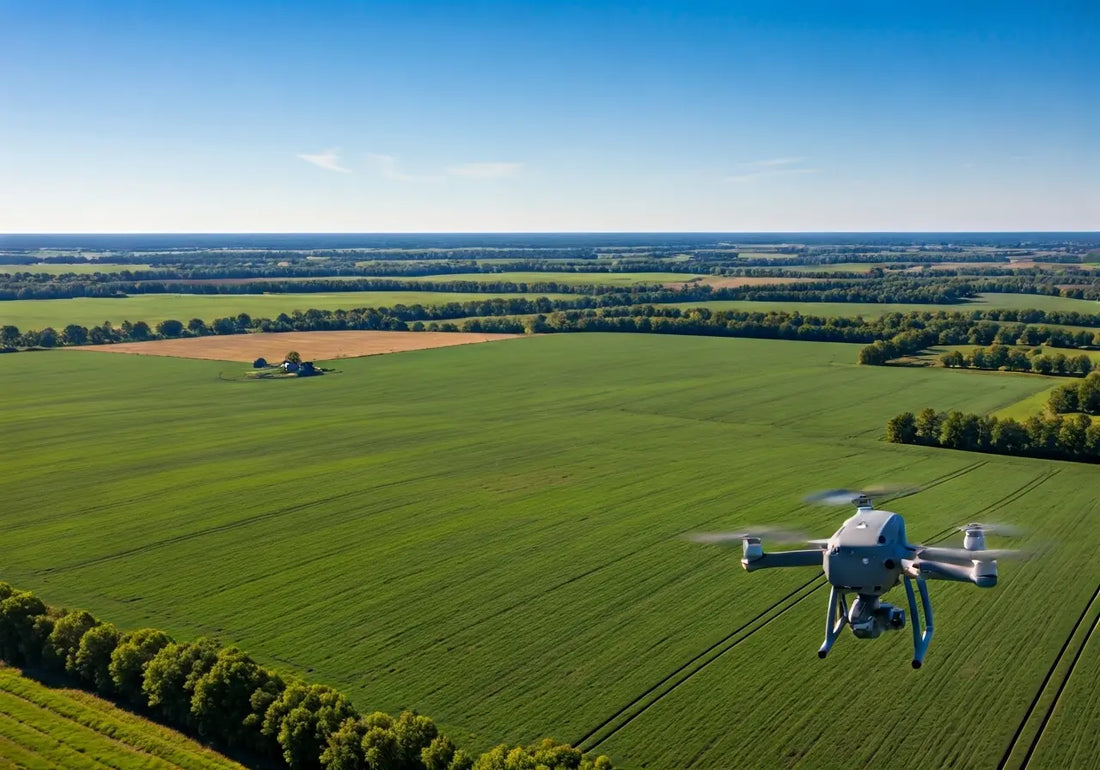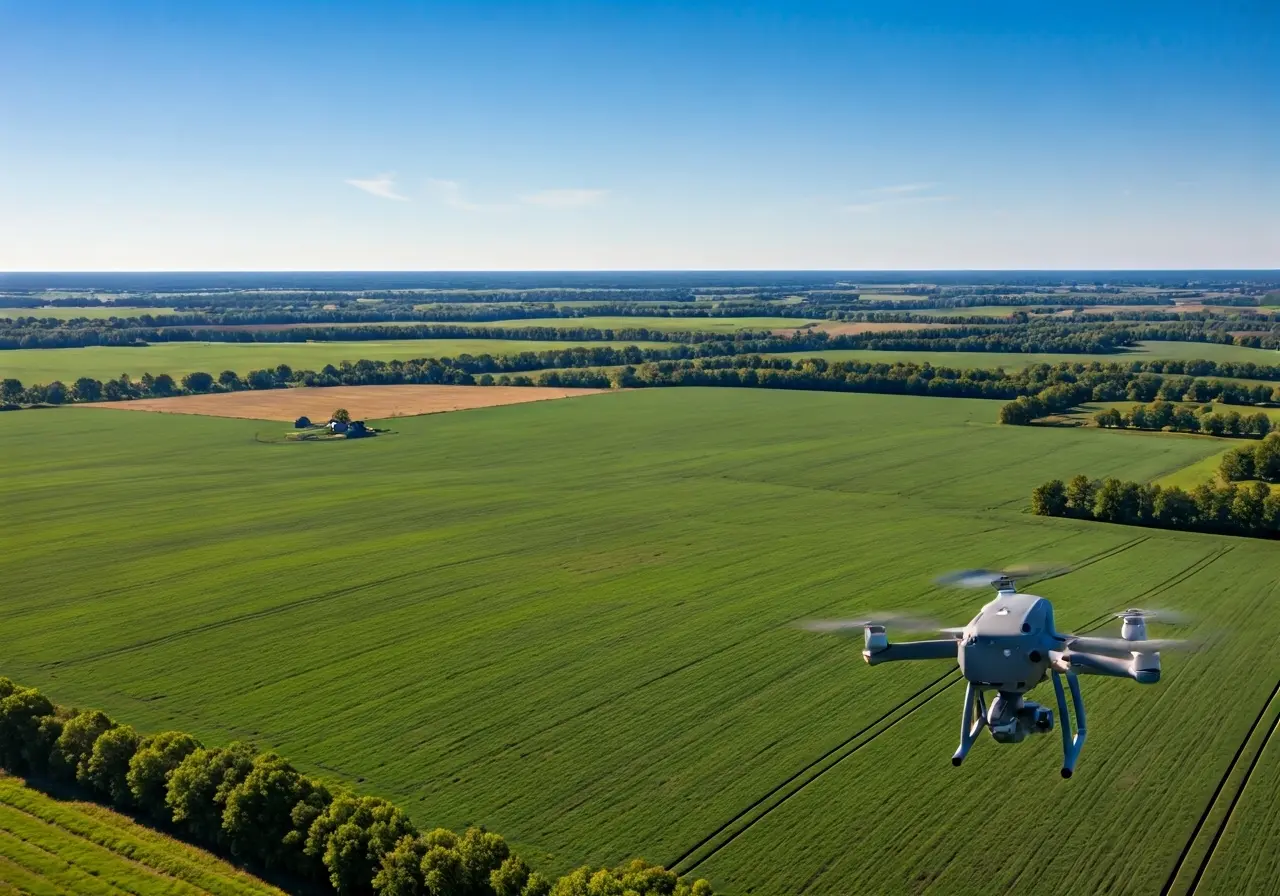
Agriculture Drone Solutions: The Future of Precision Farming
Share
In recent years, the use of drones in agriculture has transformed traditional farming techniques into more precise, efficient, and data-driven practices. These flying devices have become a cornerstone in precision farming, providing invaluable insights and solutions that save time and resources, ultimately enhancing crop yield. But what exactly are agriculture drone solutions, and how do they redefine the future of farming? Let’s dive into this exciting technological advancement and explore its benefits.
Understanding the Basics of Agriculture Drones
Agriculture drones are aerial devices equipped with advanced sensors and cameras, designed to survey fields and gather detailed data. These drones offer a bird’s-eye view of agricultural land, making it easier to monitor crop health, assess field variations, and optimize inputs.
The evolution of drone technology in agriculture has been remarkable. Initially, drones were simple tools, mainly used for capturing aerial imagery. However, today’s agriculture drones are much more sophisticated. They can be fitted with multispectral sensors, enabling the detection of light reflected from crops at various wavelengths. This helps in assessing plant health based on chlorophyll content and other critical factors. With such functionalities, agriculture drones have essentially become flying laboratories, providing vital data with unprecedented accuracy.
Moreover, these drones are designed to operate in different weather conditions, allowing for regular monitoring of crops. Some models are even equipped with temperature and humidity sensors, enhancing their utility across different climate zones. With the capacity to cover large areas in a fraction of the time it takes on foot, these drones significantly cut down the labor required in traditional farming practices, proving to be a cost-effective asset for farmers.
Key Benefits of Drone Technology in Farming
Drones offer numerous advantages for farmers, including the ability to precisely monitor crop health, detect pest infestations early, and manage resources more efficiently. By providing detailed analytics, drones help farmers make informed decisions, ultimately leading to better crop management and increased yields.
One of the most significant benefits of drone technology in agriculture is the enhancement of crop monitoring through NDVI (Normalized Difference Vegetation Index) maps. These maps are essential for assessing crop vigor and identifying areas that may require additional resources or intervention. Furthermore, drones help identify pests and diseases at early stages. By detecting anomalies in crop health through infrared technologies, farmers can act promptly, preventing potential losses and protecting their investments.
In addition, drones contribute to water conservation efforts. They provide precise data on moisture levels across different sections of a field, enabling optimized irrigation scheduling. For instance, using drones to monitor water distribution ensures that specific areas are neither over-irrigated nor under-irrigated, effectively saving water while ensuring optimal crop growth. Moreover, drones equipped with thermal cameras can locate irrigation system inefficiencies, such as leaks, which might otherwise go unnoticed.
How Drones Enable Precision Agriculture
Precision agriculture involves using precise data to manage fields and crops effectively. Drones collect real-time data that allows farmers to pinpoint areas that need attention, customize their farming strategies, and apply exact doses of fertilizers or pesticides, reducing waste and maximizing outputs.
With precision agriculture, the emphasis is on data-driven decision-making. Drones allow farmers to precisely map their fields and identify variability in crop and soil properties at granular levels. This level of detail enables precision farming strategies such as variable rate technology (VRT), where inputs like seeds, fertilizers, and water are adjusted according to specific field needs. Such smart interventions significantly reduce input costs and enhance yields, while also mitigating the environmental impact of farming practices.
Furthermore, drones bridge the gap between traditional farming practices and modern technological advancements. By combining data collected by drones with machine learning algorithms, farmers can predict yield outcomes, optimize planting schedules, and improve crop rotation strategies. This integration of drones into precision agriculture is not only about adopting new technologies but revolutionizing the way farming has been done for centuries.
Challenges and Considerations in Implementing Drone Solutions
While the benefits are clear, integrating drones into farming also presents challenges like cost, regulatory hurdles, and the need for specialized training. It’s important for farmers to consider these factors and plan adequately to ensure successful adoption of drone technology.
Cost is one of the main barriers to widespread adoption, as the initial investment for advanced drone technology can be substantial. To mitigate this, many farmers are exploring cooperative ownership models or leasing options to share the costs and benefits. Regulatory challenges are also significant, as airspace management and restrictions can vary greatly from region to region. Staying updated with local aviation rules and acquiring necessary permits is crucial for compliance.
Moreover, effective use of agricultural drones requires both technical aptitude and continuous learning. Farmers and staff must be trained not only in flying drones but also in interpreting the data they gather. As technology evolves, staying on top of advancements is essential to leverage the full potential of agriculture drones. Addressing these challenges with strategic planning ensures the effective integration of drones into precision agriculture and ultimately drives successful outcomes.
Real-Life Applications and Success Stories
Across the globe, farmers and agribusinesses are already reaping the rewards of drone technology. From vineyards in France monitoring grape health to large-scale farms in the USA optimizing irrigation, these success stories highlight the transformative power of drones in agriculture.
In India, for example, farmers are using drones to battle locust swarms, which have been a severe problem in recent years. By leveraging drone technology, they can swiftly apply pesticides to affected areas, minimizing crop damage and reducing the labor-intensive spraying process. In Japan, rice farmers utilize drones to survey vast fields quickly, assessing crop maturity and planning harvesting schedules more accurately, therefore optimizing the entire production process.
In addition, several agritech startups and established firms are dedicated to expanding the utility of drones by developing innovative applications such as autonomous field mapping and real-time crop analytics. These advancements not only create new value for the agriculture sector but also position drones as indispensable tools for future farming challenges. Real-world implementations of drone technology underscore its role as a vital partner in enhancing the productivity and sustainability of agriculture.
Embracing the Future of Farming with Drones
As we look towards the future of farming, agriculture drone solutions stand out as a revolutionary tool that holds the promise of more sustainable and efficient practices. By enhancing precision, saving valuable resources, and providing unique perspectives, drones are setting the standard for modern agriculture. Embracing these technologies not only leads to better crop yields but also fosters an innovative spirit essential for meeting the growing demands of the global population. For comprehensive information, visit our homepage and explore our agriculture drone solutions.

